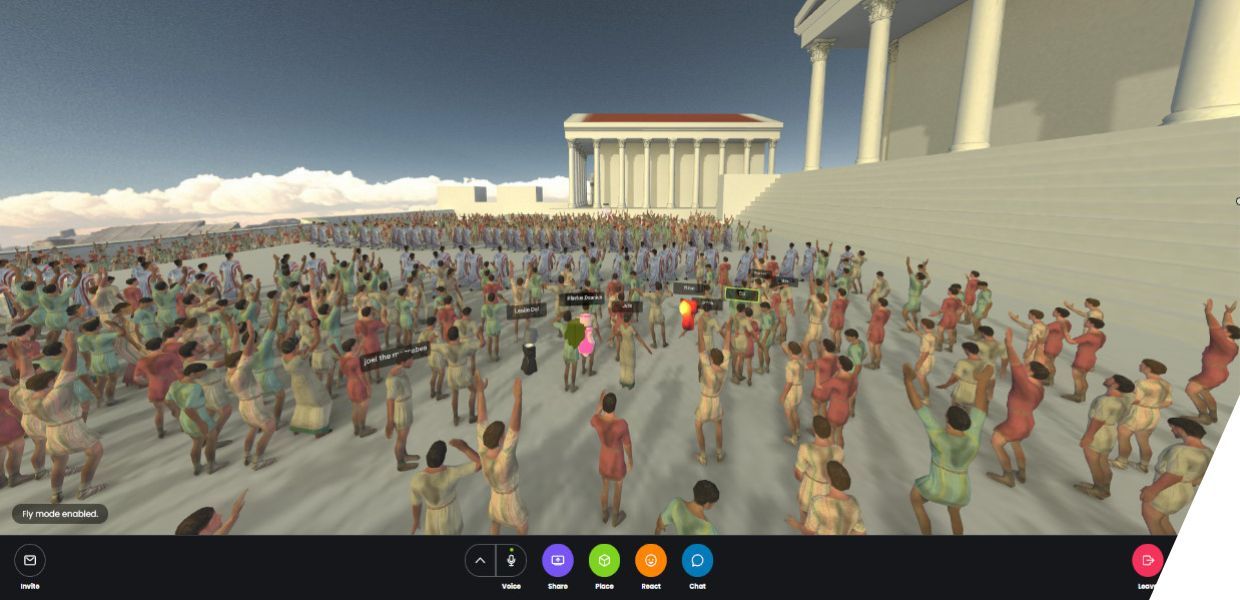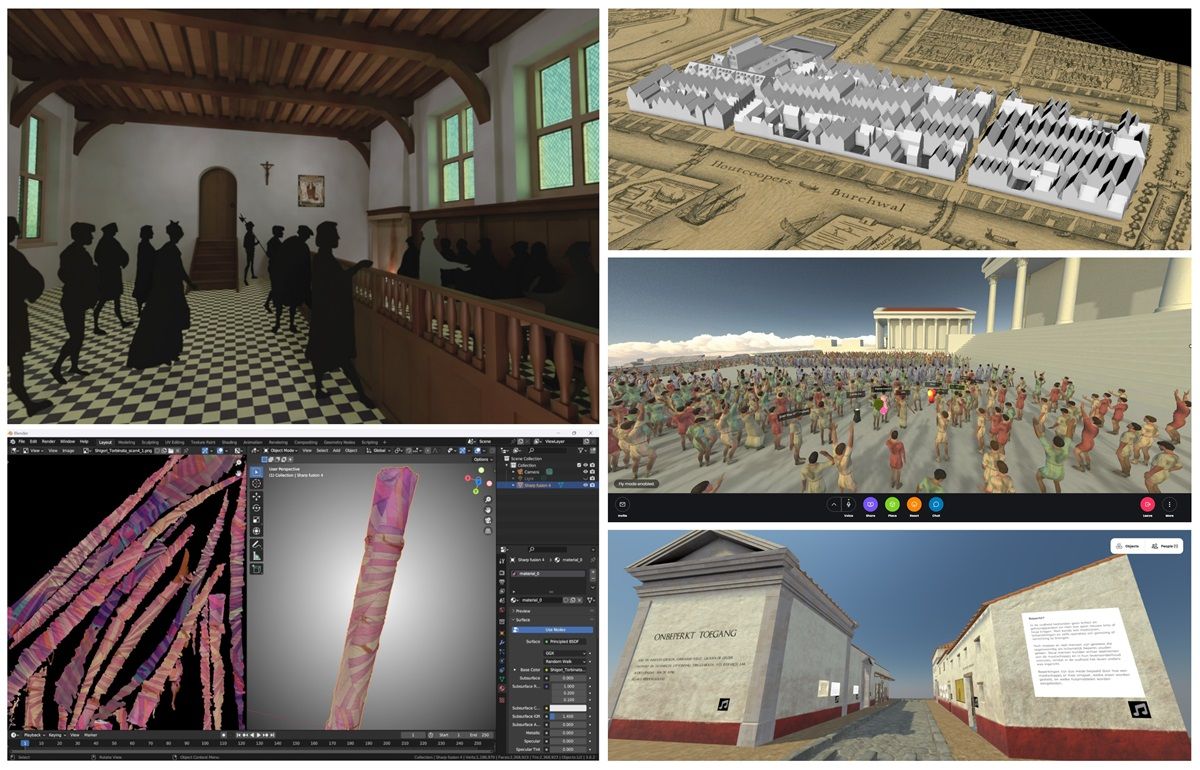With Virtual Past Places - a browser-based, collaborative, virtual reality platform developed using Mozilla Hubs - users can experience the past by navigating in virtual historical reconstructions or reality-based 3D models of, for example, archaeological sites and excavations. The platform also hosts virtual exhibitions such as the ‘Disability and sickness in antiquity’, a multi-media exploration of the topic created for the Allard Pierson Museum. Other environments are currently developed and tested by the 4DRL members. We are using them as teaching materials in a number of courses at the humanities faculty of the University of Amsterdam to evaluate the impact of VR on learning outcomes.
Finally, the recently granted project Museaal Verleden proposes an innovative use of 3D modelling and VR to allow a visit to past museum exhibitions. A joint initiative of the Stedelijk Museum Amsterdam, the Allard Pierson Museum, the Department of Theatre Studies at the University of Amsterdam, the 4DRL and various private partners, this project aims to develop a VR toolkit to (re)construct exhibitions that are not accessible anymore. With a focus on easy-to-use software and a widely applicable methodology, the prototype will be developed using Mozilla Hubs and will take the first international scenography exhibition which took place in the Stedelijk Museum in 1922 as a case study. To cater for the designers and researchers wishing to directly access art objects from within the virtual environment, an interface for directly accessing and importing collection items from Europeana.eu has been built.
Current challenges and hope for the future
One challenge that the lab has faced in its projects is the diversity of the case studies and their unique research questions. These often necessitate the adoption of ad hoc approaches, where various methods are pieced together to create the most suitable workflow. Another significant challenge is determining the best strategy to ensure the long-term preservation and accessibility of the digital assets created.
We envision a future where 3D models and digital cultural heritage can be easily accessed and explored on interactive platforms, enriched with contextual data to enhance understanding and reuse in research and education. Currently, we are exploring the potential of VR and AI technologies to create immersive learning experiences, tackle complex research questions, automate workflows, and foster interdisciplinary collaborations. Ultimately, we hope that these developments will coincide with a surge in digital literacy, lowering the barrier for the use of 3D technologies among researchers, students, and cultural heritage practitioners.
Find out more
Visit the 4D Research Lab website and the 4D Research Lab youtube channel to find out more about our work. Get in touch if you are interested in becoming one of our partners in research-oriented projects (mail to the lab’s coordinator, Dr Jitte Waagen, at J.Waagen@uva.nl).


